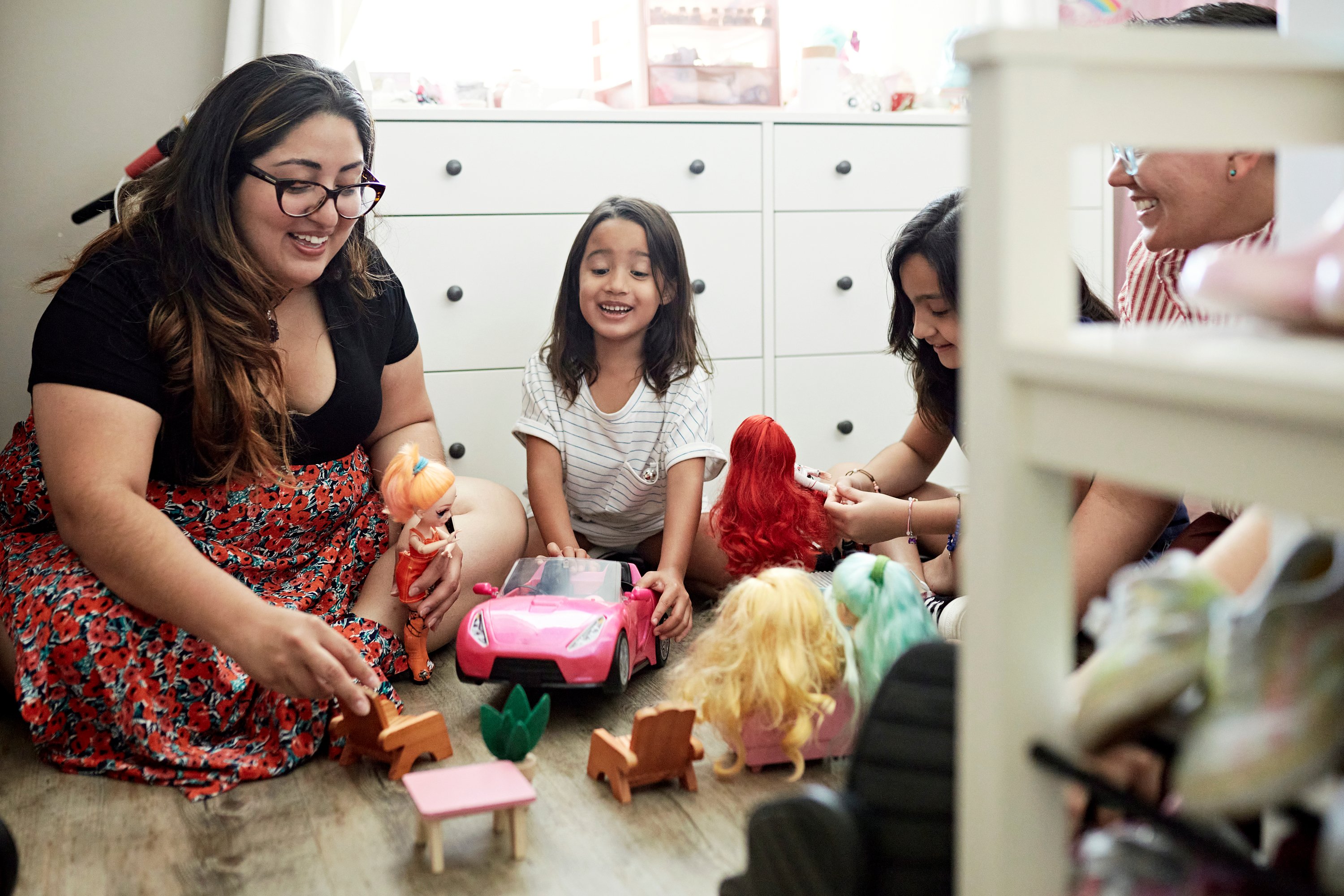Mattel (MAT +1.17%) reported first-quarter 2016 earnings on Wednesday. The toymaker beat analysts' revenue estimates, but fell short on the bottom line, due to the loss of a Disney license to rival Hasbro (HAS +0.27%), continued currency headwinds, and struggling Barbie sales.
Shares of Mattel closed Thursday down 5.8%. The stock has returned 21.4%, including dividends, over the one-year period through Thursday, crushing the S&P 500's 1.8% return and edging past Hasbro's 19.9% return.
My purpose isn't to rehash the results (you can read my take here), but to supplement the earnings release data with color from Mattel's analyst conference call. Here are five things you should know.

Image source: Mattel.
1. Fisher-Price is getting a style makeover
From President and COO Richard Dickson's remarks:
[E]arlier this month we were excited to formally announce the employment of one of today's most popular designers, Jonathan Adler, as Creative Director for the Fisher-Price brand. You will begin to see his influence this fall, and we are hard at work leveraging his unique understanding of lifestyle aesthetics for today's families with more sophisticated Fisher-Price style, fashion and function for 2017.
Adler, who is known for his modern design sensibilities, will set the style direction for the maker of products for babies through preschoolers. This style revamp is specifically aimed at capturing the dollars of more millennials, a demographic that reportedly wants its children's products to be stylish additions to their homes. Some of these products will likely come with higher price tags, which should translate to expanded profit margins for Mattel.
2. Plans for tech acquisitions Fuhu and Sproutling
From CEO Chris Sinclair's remarks:
A lot of work [is] being done to ... integrate both Fuhu and Sproutling with some of the Fisher-Price lines. I think we'll probably be rolling some things out in the fourth quarter this year, principally in China as the lead market. But all designed to go after early childhood development; sort of a nursery of the future, if you will.
Additionally, we are doing a lot of things with the Fuhu learning platform that we'll start to roll out a little bit more this fall on their tablet business. [Sinclair then mentions Asia as the initial market.]

Image source: Mattel.
Mattel acquired in January the assets of Fuhu, which had been in bankruptcy, and Sproutling. Fuhu, like Mattel, is based in El Segundo, Calif., and best known for its colorful line of nabi children's tablets. San Francisco-based Sproutling makes a smart baby monitor that measures heart rate, skin temperature, motion, and position. The product was named a Best of Innovation Honoree at the 2015 Consumer Electronics Show (CES).
CFO Kevin Farr said that Mattel expects these acquisitions to be break-even from an earnings standpoint this year and "hopefully accretive" to earnings next year.
Acquiring Sproutling should prove a great move. I'm less sold on the Fuhu asset acquisition, as affordable tablets generally have thin profit margins, though certainly there's much synergy that could be exploited between Mattel's brands and a child-focused tablet.
3. The new Fashionista Barbies are now rolling out internationally
From Dickson's remarks:
They [the new Fashionista Barbies] are currently rolling out now. In fact, they are just hitting shelves in Europe more significantly than [in] other markets. ... [They] will hit Asia shortly in certain markets in Asia, and Latin America probably in the second half of the year.
The new Fashionista collection includes dolls with three new shapes -- petite, tall, and curvy -- that Mattel launched in the U.S. amid much publicity earlier this year. These dolls might help international Barbie sales during the remainder of the year. First quarter year-over-year sales of the iconic doll decreased 3%, though were flat in constant currency. Sales were up 11% in the U.S. & Canada, and down 7% internationally.
4. Why Mega Brands' construction business is on fire
From Dickson's remarks:
I'd like to highlight the solid performance of MEGA Brands' construction globally. We continue to see very strong results with MEGA's preschool executions, our own brand overlays of Monster High and American Girl, as well as the initial popularity of the Teenage Mutant Ninja Turtles product line ahead of the June movie release.
Mattel acquired Montreal-based Mega Brands in 2014 to expand into the fast-growing construction building sets and arts and crafts categories. Mega Brands at the time was the No. 2 player -- behind titan Lego -- in what was then a $4-billion construction building set market.
The brand's initiatives are paying off. Revenue in the construction/arts & crafts segment in the first quarter soared 62% on a reported basis and 78% in constant currency to $61.9 million, accounting for 6.4% of the company's total revenue.
While Hasbro remains by far the better performing of the big two publicly traded toy companies, it lacks a solid presence in the construction set space.
5. Fisher-Price is upping its focus on early childhood development products
From Dickson's remarks:
We are seeking to accelerate this momentum as we continue to emphasize early childhood development, the most important demand driver in the category today. We've already seen a tremendous response to our new Think and Learn line, with the widely anticipated Codeapillar product set to launch later this year.
The early childhood development space has performed well and management believes it has even greater growth potential. There was no mention of margins, but I'd suspect this space has higher-than-brand-average profit margins. Parents are often willing to pay up for products they believe will help give their children a strong start in life.







